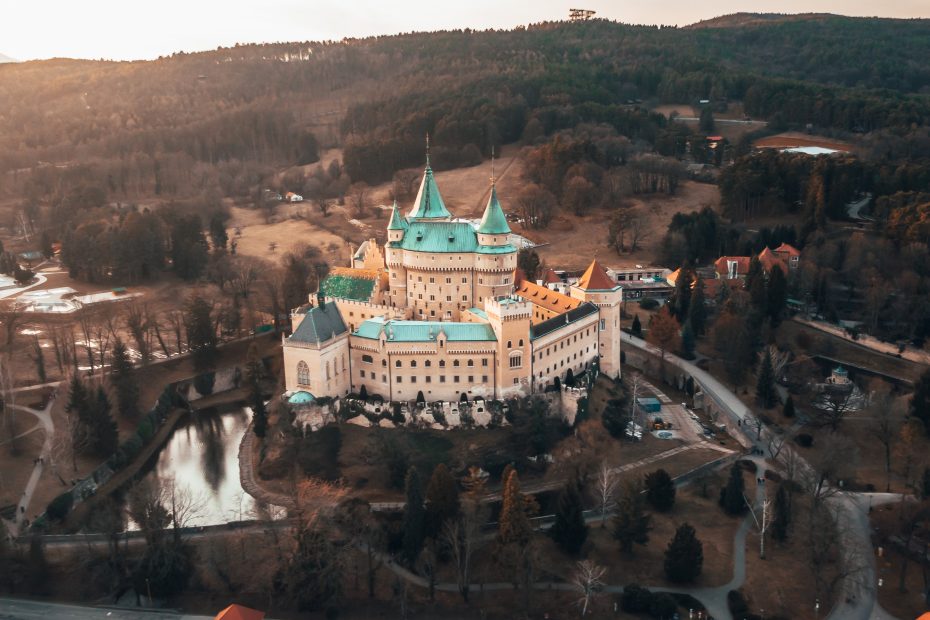Table of Contents
Introduction
Slovakia is a small country in Central Europe with a rich cultural heritage. Despite its size, Slovakia has maintained unique folklore traditions, festivals, architecture, cuisine and handicrafts that showcase the spirit of the Slovak people. From decorated Easter eggs to Gothic castles, Slovakia’s cultural traditions provide an enchanting window into Eastern European history.
Folklore and Legends
Slovak folklore draws upon common Slavic influences as well as localized legends.Characters from Slavic mythology like the fertility god Lada and the god of the underworld, Chernobog, feature in Slovak folk tales. Slovakia shares stories of witches, vampires and werewolves with its neighbors. Traditional fairy tales like the Cinderella story are also popular.Unique Slovak folklore includes the legend of Juraj Jánošík, a Robin Hood-like figure who stole from the rich.
Music and Dance
Folk music and dance have been pillars of Slovakian culture for generations. Traditional Slovak folk music makes use of various string and wind instruments, with lyrics often focused on rural life. Intricate fujara flutes are icons of Slovak folk.Vibrant dances like the čardáš and odzemek accompany traditional music. In male solo dances like the odzemek, skilled footwork intertwines with acrobatic leaps to show off the dancer’s agility. The čardáš dance features partners interlocking arms, spinning and stepping in rhythm to fast-paced music.
Traditional Attire
Slovakia’s traditional costumes reveal the country’s aesthetic heritage. Slovakian women don festive embroidered vests over white blouses and colorful floral skirts. Intricately decorated aprons, often with lace, complete the outfit. Men’s traditional dress features white shirts, vests, black trousers and hats. Outerwear like coats and cloaks are embellished with embroidery. Clothing can vary by region, such as distinct shepherd styles in northern mountain areas.
Festivals and Celebrations
Slovaks carry on folk traditions through spirited annual festivals and holidays. At Easter, Slovaks bring hand-painted eggs called kraslice to church for blessings. Christmas sees families adorning trees with decorations and gathering for traditional fish dinners.Masopust, a carnival held before Lent, involves parades, dancing and feasting. During summer solstice, the Východná Festival showcases authentic dance and music. October’s Harvest Festival offers wine, dancing and agricultural events to celebrate the season.
Cuisine
Hearty peasant-style cooking defines Slovak cuisine. Breads, dumplings, soups and stews are staple everyday foods. Bryndzové halušky, small potato dumplings topped with salty sheep’s cheese, represent Slovakia’s national dish. Pork, beef, poultry, cabbage, mushrooms and cheeses are common ingredients. For sweets, Buchty cakes and štrúdle pastries satisfy any sweet tooth. Each Slovak region boasts local specialties: the High Tatras mountains are known for smoked meats and sheep’s cheese, while wine-growing valleys produce unique wines.
Architecture
From humble countryside cottages to imposing castles, Slovakian architecture reveals a vibrant history. UNESCO-listed wooden churches dating to the 15th-17th centuries display masterful craftsmanship with carved altars and painted interiors. The High Tatras feature traditional chalets with decoratively carved gables.Soaring Gothic and Renaissance castles like Bojnice Castle grace the Slovak landscape. Urban architecture includes winding streets filled with ornate cathedrals in old town districts. Modern Slovakia also boasts contemporary styles like the flying saucer-shaped Nový Most bridge.
Handicrafts
Slovak folk crafts add handmade beauty to everyday life. Elaborate pottery like the blue printed Hrnčiarska Ves pottery has been produced locally for centuries. Painted Easter eggs called kraslice display intricate designs applied through wax resist techniques. Embroidery adorns Slovak folk costumes and linens with colorful patterns. Intarsia wood inlay crafts objects like boxes with decorative motifs. Handblown glass art from regions like Trenčianske Teplice demonstrate Slovak skill.
Language
The Slovak language developed gradually from a Slavic dialect into a distinct language, which was codified in the 19th century. Related to Czech and Polish, Slovak uses the Roman alphabet with some diacritical marks. Given the country’s small size, regional dialects are limited. However, some dialects feature vocabulary differences reflecting historic Hungarian, German and Romanian influences. The Slovak literary language retains many formal grammatical cases. Maintaining their mother tongue has been a key part of preserving Slovak national identity.
Conclusion
Despite influences from surrounding cultures, Slovakia retains a robust sense of ethnic pride rooted in its folk traditions. From music and costumes to vivid festivals, these traditions create a rich cultural experience. Safeguarding Slovak heritage like handicrafts and architecture remains vital for both locals and tourists to better understand Central Europe’s diversity. Whether participating in Easter celebrations or touring High Tatras architecture, discovering Slovakia’s folklore offers an engaging perspective on this dynamic country.
FAQs
What are some key elements of Slovak folklore?
Some key elements are Slavic mythology like the gods Lada and Chernobog, legends like Juraj Jánošík, fairy tales, and stories involving creatures like witches, vampires and werewolves.
What traditional dances represent Slovak culture?
Iconic Slovak dances include fast-paced partner dances like the čardáš, as well as energetic men’s solo dances like the odzemek featuring acrobatics.
How would you describe traditional Slovak clothing?
Women’s costumes feature embroidered vests, white blouses, colorful skirts, and lace aprons. Men wear white shirts, vests, black trousers and hats, with embroidered outerwear. Styles vary by region.
What are some quintessential Slovak foods?
Bryndzové halušky (dumplings with sheep’s cheese), pork, beef, cabbage, mushrooms, breads, and dishes like Buchty cakes represent Slovak cuisine. Each region has local specialties.
What types of folk architecture can you find in Slovakia?
Notable architectural styles include medieval wooden churches, chalets with decorative woodworking, Gothic castles, Renaissance cathedrals, and contemporary designs like the flying saucer-shaped Nový Most bridge.
